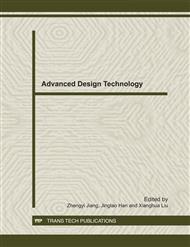[1]
A. B. Stambouli, E. Traversa, Fuel cells, an alternative to standard sources of energy, J. Renewable and Sustainable Energy Reviews 6 (2002) 297–306.
DOI: 10.1016/s1364-0321(01)00015-6
Google Scholar
[2]
J. Mancinkoski, J.P. Kopasz, T.G. Benjamin, Progress in the US DOE fuel cell subprogramefforts in polymer electrolyte fuel cells, Int. J. Hydrogen Energy 33 (2008) 3894-3902.
DOI: 10.1016/j.ijhydene.2007.12.068
Google Scholar
[3]
B.K. Kakati, D. Deka, Effect of Resin Matrix Precursor on the Properties of Graphite Composite Bipolar Plate for PEM Fuel Cell, J. Energy & Fuels 21 (2007) 1681-1687.
DOI: 10.1021/ef0603582
Google Scholar
[4]
B. K. Kakati, D. Deka, Differences in physico-mechanical behaviors of resol(e) and novolac type phenolic resin based composite bipolar plate for proton exchange membrane (PEM) fuel cell, J. Electrochim. Acta 52 (2007) 7330–7336.
DOI: 10.1016/j.electacta.2007.06.021
Google Scholar
[5]
H. S. Lee, H.J. Kim, S.G. Kim, S.H. Ahn, Evaluation of graphite composite bipolar plate for PEM (proton exchange membrane) fuel cell: Electrical, mechanical, and molding properties, J. of Materials Processing Technology 187–188 (2007) 425–428.
DOI: 10.1016/j.jmatprotec.2006.11.213
Google Scholar
[6]
Y. Shao, G. Yin, Z. Wang, Y. Gao, Proton exchange membrane fuel cell from low temperature to high temperature: Material challenges, J. Power Sources 167 (2007) 235–242.
DOI: 10.1016/j.jpowsour.2007.02.065
Google Scholar
[7]
I.U. Hwang, H.N. Yua, S.S. Kim, D.G .Lee, J.D. Suh, S.H. Lee, B.K. Ahn, S.H. Kim, T.W. Lim, Bipolar plate made of carbon fiber epoxy composite for polymer Electrolyte membrane fuel cells, J. Power Sources 184 (2008) 90–94.
DOI: 10.1016/j.jpowsour.2008.05.088
Google Scholar
[8]
H. Tsuchiya and O. Kobayashi, Mass production cost of PEM fuel cell by learningCurve, Int. J. Hydrogen Energy 29 (2004) 985-990.
DOI: 10.1016/j.ijhydene.2003.10.011
Google Scholar
[9]
E. Middelman, W. Kout, B. Vogelaar, J. Lenssen, E. de Waal, Bipolar plates for PEM fuel Cells, J. Power Sources 131 (2003) 57 – 61.
DOI: 10.1016/s0378-7753(03)00070-3
Google Scholar
[10]
H. C. Kuan, C.C. Ma, K.H. Chen, S.M. Chen, Preparation, electrical, mechanical and thermal properties of composite bipolar plate for a fuel cell , J. Power Sources 134 (2004) 7–17.
DOI: 10.1016/j.jpowsour.2004.02.024
Google Scholar
[11]
J.H. Lee, Y.K. Jang, C. E. Hong, N.H. Kim, P. Li, H.K. Lee:J. Effect of carbon fillers on properties of polymer composite bipolar plates of fuel cells, J. Power Sources 193 (2009) 523-529.
DOI: 10.1016/j.jpowsour.2009.04.029
Google Scholar
[12]
B. K. Kakati, V. Mohan, Development of Low-Cost Advanced Composite Bipolar Plate for Proton Exchange Membrane Fuel Cell, J. FUEL CELLS 08 (2008) 45–51.
DOI: 10.1002/fuce.200700008
Google Scholar
[13]
L. Du, S.C. Jana, Highly conductive epoxy/graphite composites for bipolar plates in protonexchange membrane fuel cells, J. Power Sources 172 (2007) 734–741.
DOI: 10.1016/j.jpowsour.2007.05.088
Google Scholar
[14]
S.R. Dhakate, R.B. Mathur, B.K. Kakati, T.L. Dhami, Properties of graphite-compositebipolar plate prepared by compression molding technique for PEM fuel cell, Int. J. Hydrogen Energy 32 (2007) 4537 – 4543.
DOI: 10.1016/j.ijhydene.2007.02.017
Google Scholar
[15]
V. Mehta, J.S. Cooper, Review and analysis of PEM fuel cell design and manufacturing,J. Power Sources 114 (2003) 32–53.
DOI: 10.1016/s0378-7753(02)00542-6
Google Scholar
[16]
J. Zhang, Y.W. Zou, Influence of graphite particle size and its shape on performance of carbon composite bipolar plate, J. of Zhejiang University Science 6A (10) (2005) 1080-1083.
DOI: 10.1631/jzus.2005.a1080
Google Scholar
[17]
Y. Sadeli, J. Wahyuadi, B. Prihandoko, S. Harjanto, Study on Graphite Electric ArcFurnace Waste as a Bipolar Plate Composite Material for Polymer Electrolyte Membrane Fuel Cell (PEMFC) Application, J. of Materials Science and Engineering B 1 (2011) 178-183.
DOI: 10.4028/www.scientific.net/amr.421.60
Google Scholar
[18]
M. Mohiuddin, S.V. Hoa, Electrical resistance of CNT-PEEK composite under compression at different temperatures, Springer Open Journal Nanoscale Research Letters 6 (2011) 1-5.
DOI: 10.1186/1556-276x-6-419
Google Scholar
[19]
Y.P . Mamunya, V.V. Davydenko, P. Pissis, V. E, Lebedev, Electrical and thermal conductivity of polymers filled with metal powders, European Polymer Journal 38 (2002) 1887-1897.
DOI: 10.1016/s0014-3057(02)00064-2
Google Scholar


